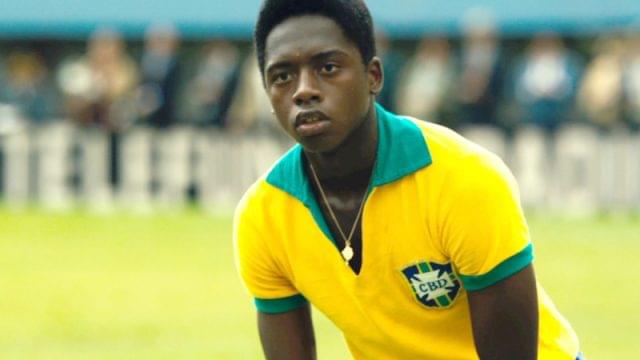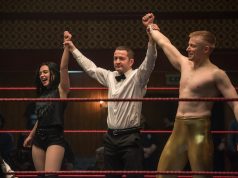
Warm up your cringe muscles, everyone. Brazilian soccer legend Pelé is at last the subject of a biographical sports drama, called “Pelé: Birth of a Legend” on the poster but just “Pelé” in the movie itself. No one would argue against Pelé’s worthiness of the biopic treatment, but there’s a snag: the man himself is the executive producer. So when the movie is only 22 minutes old the first time it depicts a crowd chanting Pelé’s name, be glad it showed some restraint and waited that long.
Written and directed by Jeff and Mike Zimbalist, brothers with two of ESPN’s “30 for 30” films under their belts, Pelé lays it on thick from the get-go, with announcers at the 1958 World Cup urgently telling us that 17-year-old Pelé (Kevin De Paula Rosa) is a phenom, the youngest player in Cup history, an emerging force of nature, etc., as the crowd looks on in awe. (Crowds looking on in awe are a big part of the film.)
With that settled, we jump back to 1950, when 9-year-old Pelé (Leonardo Lima Carvalho) — nicknamed Dico at this stage of his life — is a dirt-poor favela kid whose football prowess is almost magical. His father (Seu Jorge), a former footballer who now works as a hospital janitor, encourages the boy, while his mother (Mariana Nunes) wants him to focus on learning more practical skills. Dico and his barefoot friends, all hammy, precocious youngsters straight out of the Little Rascals, play a football game against the snobby rich kids (on teams called the Kings and the Shoeless Ones) with a talent scout in the crowd. Mouths are soon agape at Dico’s fancy footwork and his exotic style of play, “ginga,” a capoeira-rooted method common among Brazilians of African descent.
The film does well in explaining where ginga comes from and its significance in modern football. Among the elites (including those in charge of Brazil’s football program), the European style of play is preferred, and in fact the national team’s heartbreaking loss in the 1950 World Cup is blamed on the haphazard, misapplied use of ginga — which, to the untrained eye, can look a lot like horsin’ around. Part of Pelé’s legacy is that he brought ginga to the mainstream and proved its vitality, and the film dives into the conflict this presented as he worked his way up the ranks.
What the film does poorly is just about everything else. It hits the biographical points — a childhood tragedy, the source of the nickname Pelé, his joining a professional team at age 15 — with earnest but lifeless fidelity. The acting is wildly uneven, and the accents are a mess, with half the cast speaking English with Brazilian accents and the other half just speaking English. Vincent D’Onofrio shows up as a Brazilian coach who shouts some sports clichés at his new recruit. The training and gameplay sequences are always uninspired, cheesy, or both. By the time we get to Pelé’s inevitable cameo — grinning and obvious, the camera lingering on him too long like it’s nudging us in the ribs (“Look! It’s the real Pelé!”) — it’s just one more quaint embarrassment.
So it’s not a very good movie. Should you see it anyway? Yes, if you’re an enthusiastic fan of Pelé or “the beautiful game” (a term he popularized). More than anything, “Pelé” has the artless sincerity of a mildly inspiring educational film. So if you’re looking to be educated and/or mildly inspired — and you have a preexisting fondness for the subject — it might help you achieve that goal.
C (1 hr., 47 min.; )





